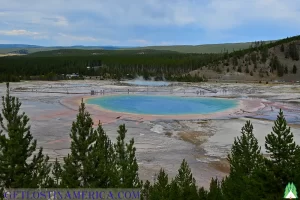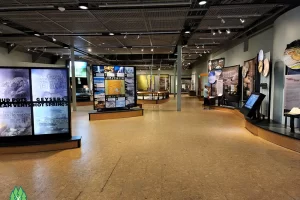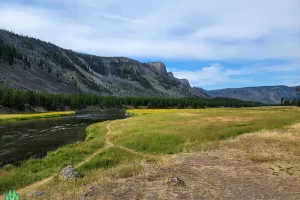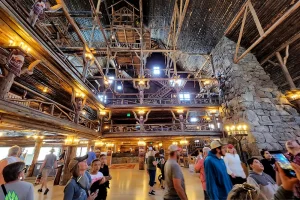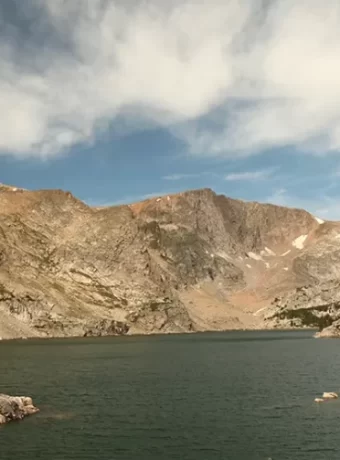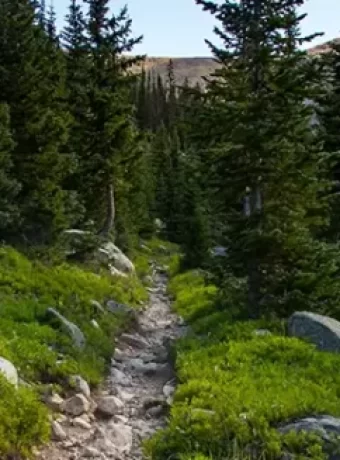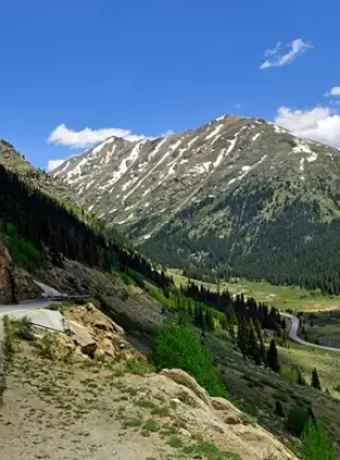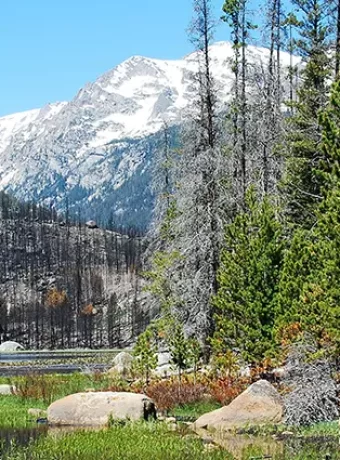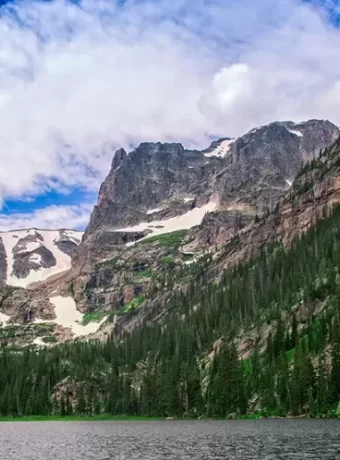Ever wondered about the History of Yellowstone National Park, that sprawling expanse of natural wonder nestled in the heartland of the Rocky Mountain West You’re not alone.
The narrative unspools like a gripping book, full of exciting characters and unexpected turns. From President Ulysses S. Grant’s pioneering move to protect this breathtaking wilderness, to Native American tribes whose connections to these lands span thousands of years; from intrepid explorers who braved untamed territories, leaving trails for future generations; right down to the park rangers today safeguarding its diverse wildlife – it’s an epic tale!
Dive in as we traverse obsidian quarry sites and unique geothermal features, painting a vivid picture of how people lived continuously amidst such stark beauty.
Just keep in mind, every stride we take into Yellowstone’s history helps us better grasp our part in safeguarding it.
Table of Contents:
The Founding of Yellowstone National Park
Yellowstone, America’s first national park and a symbol of worldwide preservation, was created on March 1st 1872. It owes its birth to a rich history marked by exploration, science, and artistry.
Early Exploration: Unveiling Nature’s Wonders
In prehistoric times, Native Americans roamed this volcanic glass-rich mountain country for over ten thousand years. John Colter, who broke off from the Lewis & Clark expedition late in the 18th century, was likely one of the first non-native individuals to explore Yellowstone National Park and witness its geothermal features.
This explorer who broke off from the Lewis & Clark expedition was likely one of the first non-native individuals to witness wonders such as geothermal features at play within these boundaries. His tales set the stage for more systematic expeditions like those led by Nathaniel Langford and Jay Cooke who hoped their findings would encourage northern Pacific railroad expansion towards this great plains region.
Ferdinand Hayden’s Role in Preservation
However crucial Colter’s discoveries were for early mapping efforts or how influential later entrepreneurs were with their railroad dreams – no figure stands taller than Ferdinand Hayden when discussing preservation measures which ultimately gave rise to our cherished public park concept. The former Civil War surgeon-turned-geologist undertook his own scientific survey trip around Yellowstone Lake under President Ulysses S Grant’s watchful eye.
To further boost awareness about protecting unique natural landscapes he solicited help from renowned landscape painter Thomas Moran along with pioneering photographer William Henry Jackson during this journey too – both artists’ works ended up playing vital roles convincing Congress about safeguarding Yellowstone’s unique natural beauty.
President Ulysses S. Grant’s Role in Yellowstone’s Establishment
Hayden and his crew of creatives and adventurers put together a detailed report for Congress. They highlighted the science and beauty tucked away in this northern wild. Even the President was
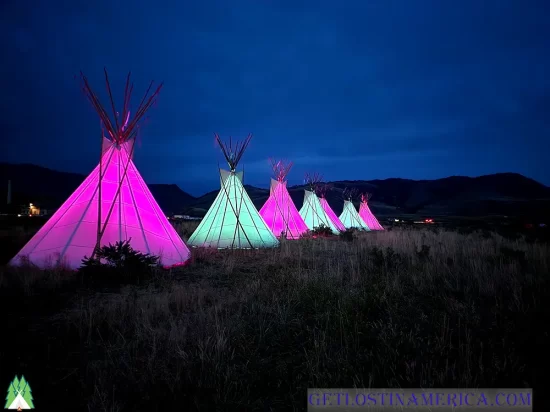
Lite Teepees at the Roosevelt Arch the North Entrance to Yellowstone Park at Gardiner Montana
Indigenous History and Connections to Yellowstone
The rich tapestry of Yellowstone National Park’s history isn’t just woven with geysers, wildlife, and picturesque landscapes. It’s also threaded deeply with over 10,000 years of Native American history. The park holds sacred significance for more than 27 individual tribes.
Obsidian Quarry Sites and Their Importance
The lands now known as Yellowstone were once the hunting grounds, gathering spots, spiritual centers, and even battlefields for many Native American tribes. Obsidian quarry sites scattered across the park provide a silent testament to their ancient tool-making practices.
This volcanic glass was highly valued by indigenous people not only in this region but all across North America because it could be knapped into sharp projectile points or cutting tools. Archaeologists have found obsidian projectile points originating from Yellowstone as far away as Ohio. That shows how widely traded these resources were among prehistoric societies.
A unique feature about obsidian is that each deposit has its own chemical fingerprint which can be traced back to its source location. So we know without a doubt where an artifact originated – like leaving a return address on every piece sent out into the world.
To think that thousands of years ago someone stood right here in what is now called Yellowstone National Park, chipping away at an obsidian nodule… It’s truly awe-inspiring.
Cultural Significance of Geothermal Features
You might have heard myths claiming Native Americans feared Yellowstone’s geothermal features. However, historical evidence paints quite a different picture – one where hydrothermal features held medicinal purposes rather than evoking fear. Recent studies suggest that tribes such as the Coeur d’Alene and Nez Perce utilized these thermal waters for healing.
The geysers, hot springs, and fumaroles of Yellowstone were never seen as threats. Instead, they were viewed as potent spiritual beings that add to the park’s allure.
- Grand Prismatic Spring History of Yellowstone National Park America's First
- Learn more about the geyser basins and Old Faithful at the museum at Old Faithful in the History of Yellowstone National Park
- Madison River looking toward West Yellowstone, Montana
- Looking up at the Architectural wonder of Old Faithful Lodge
Unique Geology of Yellowstone National Park
Yellowstone National Park, with its unique geothermal features and volcanic origins, is a geological wonder. It’s home to over 10,000 hydrothermal marvels including hot springs, fumaroles, and the world-famous Old Faithful geyser. Let’s delve into these aspects that make Yellowstone so special.
The Unique Geothermal Features of Yellowstone
This park hosts one of the largest concentrations of active geysers in the world thanks to its extensive geothermal features. The grandest spectacle among them? The Old Faithful Geyser which spews boiling water high into the sky every 60-110 minutes like clockwork.
Besides this star attraction though are countless other thermal wonders – bubbling mud pots demonstrating Earth’s volatile nature; steamboat geysers roaring unexpectedly; multicolored hot springs displaying natures artistry through thermophiles (heat-loving microorganisms).
Hydrothermal Features: Geysers, Hot Springs, and Fumaroles
You’ll find three main types of hydrothermal phenomena here – geysers like Old Faithful or Steamboat erupting spectacularly; tranquil yet scalding hot springs such as Grand Prismatic Spring with its vibrant colors; finally there are hissing fumaroles – vents releasing gases from deep within Earth’s crust.
All these happen due to an intense heat source not too far below ground level—yellowstone is essentially atop a gigantic volcanic hotspot.
The Volcanic Origins of Yellowstone National Park
A lot of the sights in this mountain region can be attributed to gigantic volcanic explosions that happened eons ago. About 2 million years ago, a huge eruption occurred forming the Yellowstone Caldera – an immense crater-like depression spanning almost half the park.
Even today, signs of this restless volcano are evident through geothermal activities and regular ground uplifts and subsidence.
The last time we saw major volcanic action was roughly 174,000 years back, resulting in its current form.
Early Expeditions and Explorations in Yellowstone
history of Yellowstone National Park is marked by the brave expeditions that ventured into this wild mountain country. These early explorers not only charted the park’s natural wonders but also helped convince Congress to protect it for future generations.
The Washburn Expedition
In 1870, an expedition led by Henry D. Washburn set out to explore what we now know as Yellowstone National Park. Among its members was Nathaniel Langford, who would later play a crucial role in advocating for park protection.
This team trekked through challenging terrain, marveling at geothermal features such as Old Faithful Geyser and Grand Canyon of the Yellowstone River. Their accounts were widely published, stirring public interest in these unique natural wonders.
Ferdinand Hayden was inspired by their reports and embarked on his own expedition with Thomas Moran and William Henry Jackson just two years later. They further documented Yellowstone’s beauty—Moran with his sketches, Jackson with his photographs—and shared them back east where they made a significant impact on public opinion about preserving America’s national treasures like Yellowstone.
John Colter: The First European to Explore Yellowstone
Prior to these organized expeditions though came John Colter—a name synonymous with exploration in American history—who ventured solo into this wilderness during winter range around 1807-1808 after parting ways from Lewis & Clark Expedition he previously joined.
Hiram M.Chittenden’s writings on Moran and Jackson’s works suggests how they painted a vivid picture of Yellowstone’s unique landscape, including its largest concentration of hydrothermal features and volcanic glass quarried by indigenous people for millennia.
Colter’s tales about the area were initially dismissed as ‘madness’ but they eventually gained credence as more explorers like him confirmed his findings. His adventures paved the way for subsequent expeditions that ultimately led to Yellowstone’s protection as America’s first national park.
Conservation Efforts in Yellowstone National Park
The conservation of Yellowstone National Park is a task that spans over 150 years, right from its establishment. The challenges and controversies faced by park officials have been many, but their efforts remain undeterred.
A pivotal part of these efforts was the establishment of the National Park Service. This entity has dedicated itself to preserving not just the geothermal features or unique natural wonders like Old Faithful Geyser, but also ensuring protection for future generations.
The Role of Rangers
Park rangers play an indispensable role in maintaining this iconic national park. They are essentially guardians who help protect and conserve Yellowstone’s delicate ecosystem.
Rangers monitor animal populations on winter range areas within the park boundaries and beyond, to maintain healthy wildlife numbers. Their work extends even into controlling invasive species which can disrupt local ecosystems if left unchecked.
Beyond flora and fauna, they ensure visitor safety around hydrothermal features – no easy feat given there are over 10,000 such sites. Each ranger works tirelessly so visitors today can enjoy all that makes Yellowstone unique without harming it.
Sustainable Practices: From Trash to Trails
- Ranger-led programs educate visitors about ‘Leave No Trace’ principles – reducing human impact as much as possible when exploring America’s national parks.
- ‘Greening Operations’ initiatives focus on waste reduction with recycling stations throughout Yellowstone while increasing energy efficiency across facilities.
- To preserve historic structures like Lake Hotel near Yellowstone Lake or Old Faithful Inn next to its namesake geyser – both over a century old – park service uses traditional building methods and materials.
The National Park Service has taken a proactive stance in tackling the consequences of climate change, conducting research and formulating plans for managing resources under changing conditions. They conduct research and develop strategies for managing resources in a changing environment.
Partnerships: Working Together For Yellowstone
Keeping Yellowstone in its pristine state isn’t just the job of park officials, but it’s a shared responsibility for all.
Yellowstone, so always be prepared and check for any trail closures or warnings before setting out.
For those who prefer a more leisurely experience, scenic drives offer breathtaking views of the park’s landscapes. The Grand Loop Road takes you on a journey through the park’s major attractions, including the Upper and Lower Geyser Basins, the Grand Canyon of Yellowstone, and the Lamar Valley.
And let’s not forget about the wildlife. Beneath the majestic scenery of Yellowstone, you can find a diverse population of wildlife including bison, elk, wolves, bears and even mountain lions. Be prepared to capture a glimpse of these amazing animals in their natural habitat.
Whether you’re a history buff, a nature lover, or simply seeking adventure, Yellowstone National Park has something for everyone. So pack your bags, lace up your hiking boots, and get ready to explore one of America’s most beloved national parks.
Please Don’t Pet The Wildlife!
Yellowstone Conclusion
Exploring the History of Yellowstone National Park, we’ve journeyed from its origins to present day. We delved into President Ulysses S. Grant’s monumental decision, a first for America and the world.
We retraced footsteps across ancient obsidian quarry sites where Native American tribes once flourished. Their enduring ties to these lands echo still in Yellowstone’s heart.
We marveled at unique geothermal features that define this wild expanse, and relived daring explorations of intrepid pioneers who left indelible marks on this landscape.
The park rangers’ tireless efforts stand as testament today; they ensure every visitor can experience Yellowstone’s wonders just like those before them did.
So remember: our exploration isn’t over yet because every step we take further enriches our understanding and appreciation of America’s national gem – Yellowstone!
Explore Yellowstone Further With a Guided Fly Fishing Trip or Outdoor Performance Apparel
With a team outfitters and guides with over 60 years worth of experience fly fishing Yellowstone National Park we offer Fly Fishing Excursions in Yellowstone National Park and surrounding area.
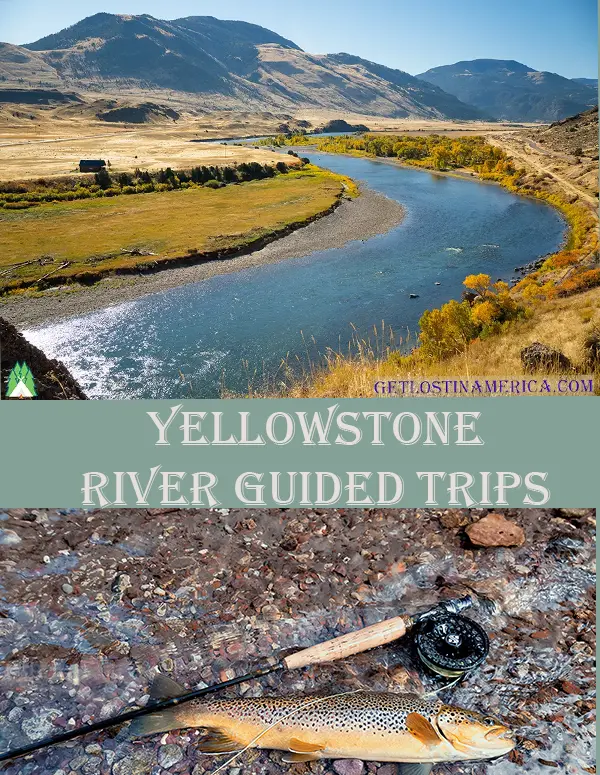

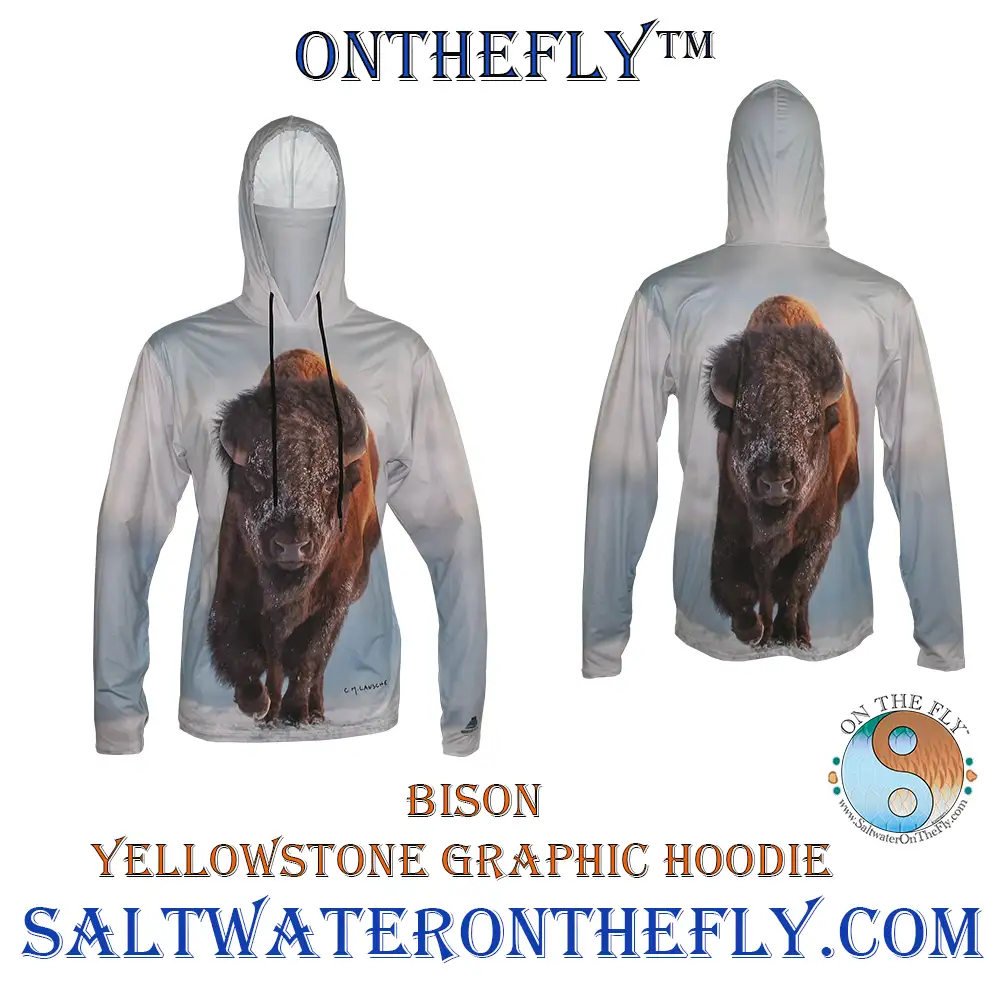
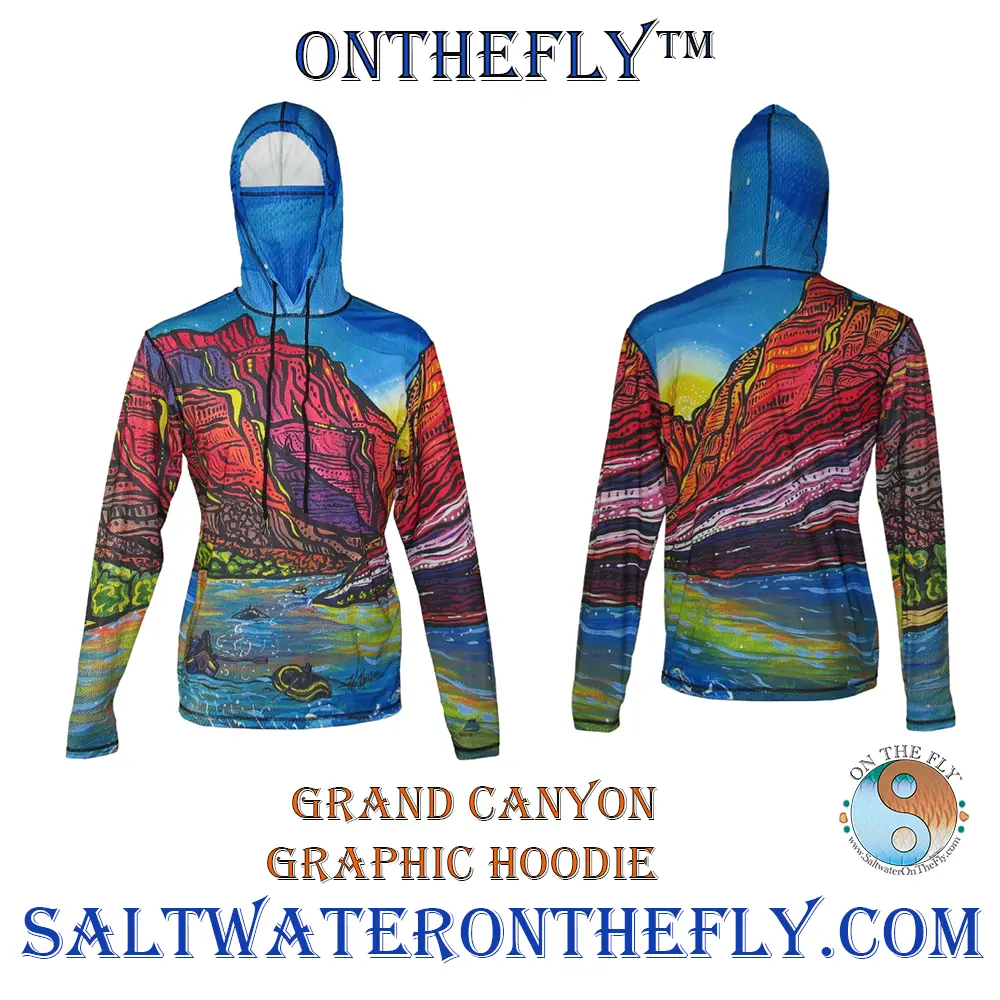
Learn More About Yellowstone’s Greater Eco-System
Mammoth Hot Springs
Mammoth Hot Springs was one the first commercial expansions into Yellowstone National Park read more: https://getlostinamerica.com/mammoth-hot-springs-yellowstone/
Learn More about the History of Gardiner Montana
Gardiner Montana was a pivitoal in the explation and commerization of Yellowstone National Park, read more: https://getlostinamerica.com/history-of-gardiner-montana/

